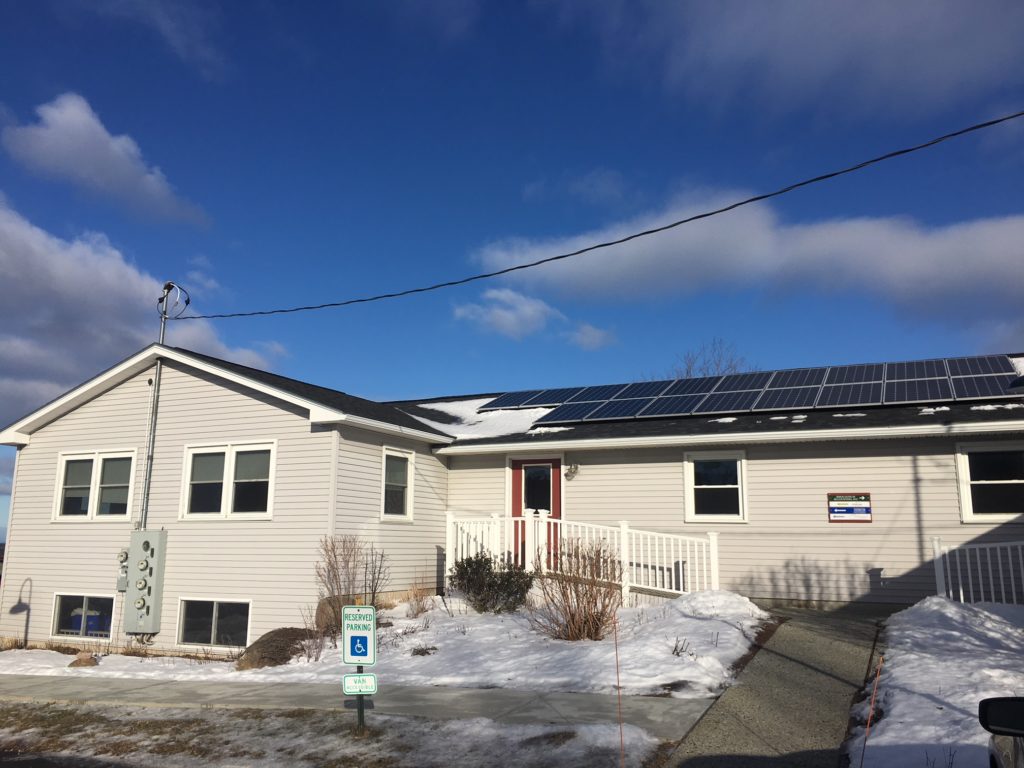Hello, and welcome to the Sterling Homes Solar Update! Here at Sterling Homes, we are committed to giving you the best experience you will ever have building a home not just now, but in the future. For that reason, back in September of 2016, we had a solar array installed on the roof of our office on Hinesburg Road to create our own renewable energy. This blog will serve as a quick update on what is going on here with our panels, while also demystifying solar power and offering interesting insight into the world of renewable energy.
Solar energy, as with wind, is not always a guarantee. Unfortunately in Vermont and much of the eastern U.S. at the time of this writing, we are experiencing an amount of that unpredictability. Not only have we had extremely cold temperatures, but Vermont is looking the way Vermont should look in the winter… white.
While solar panels work better in cold temperatures, snow, clouds, and short days significantly impact their ability to produce energy. This is reflected in our latest data, with December producing a measly 89.7 kWh. That, compared to our highest monthly total in August of 850 kWh, can seem a shockingly low number. That being said, we knew this was going to happen. It comes with the territory of living and working in a northern climate, and Vermonters are known to love our winters. Short days, snowdrifts, plowing, skiing, shoveling; we wouldn’t trade that for a little more sunshine! We bundle up, turn off the lights, light a fire in our wood stoves, and hunker down happily. With extra power produced in the summer, our winter production can stand to lag. On the upside, when the sun does shine, the clear cold air allows the panels to work at top capacity, harnessing everything they can out of our short winter days.
Today, as the North East is recovering from a “bomb cyclone” winter storm, seems as good a time as any to talk about solar panels and the changes in climate that winter brings. As previously stated, PV panels work most efficiently in cold temperatures, with the unfortunate downside that cold temperatures generally come with shorter days and weaker rays as you go farther north. Clouds and snow, staples of a Vermont winter, also hurt energy production. With panels producing power if there is any light, there is still little we can do to help clouds. Snow, on the other hand, is something we can deal with. Clearing snow either by creating a steeper angle for your solar panels or manually removing snow can help keep your panels producing, although you should probably wait until after the storm, especially when it’s called something scary like a “bomb cyclone.”
Finally, as we continue into January, many of us began to contemplate ways in which to improve our lives at the start of the New Year. It could be as lofty a goal as working out every day or landing that big promotion, or as simple as drinking an extra glass of water before a meal. Here at Sterling Homes, our goal remains the same: make others happy. In its most direct sense that means delivering a home to our clients that brings them joy, but that’s not all we do around here to make others happy. Renewable energy, like our solar panels, also leads to happiness. It makes us happy, knowing we are doing our part to reduce our impact on our planet, hopefully leaving this earth a little better than we found it.
